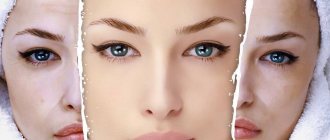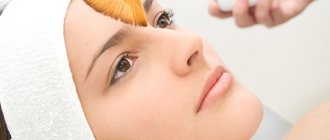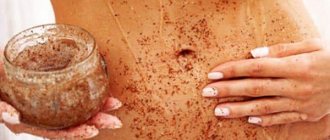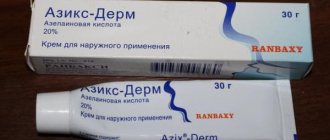How it works?
Trichloroacetic acid
Trichloroacetic acid is one of the components of TMC 3 Action peeling.
It helps
- effectively cleanse pores of excess sebum and other impurities
- fight microflora that stimulates the development of inflammation on the skin
- maintaining skin elasticity (achieved by influencing fibroblasts, which leads to an increase in the production of natural collagen)
In combination with two other components, trichloroacetic acid has an anti-inflammatory and antiseptic effect on the skin, while not only disinfecting it, but also minimizing possible irritation.
Mandelic acid
- smoothes wrinkles
- moisturizes
- removes age spots
- destroys pathogenic microorganisms, having a bleaching and antiseptic effect
Kojic acid
Kojic acid in the TMC 3 Action peeling is responsible for the external condition of the skin. With its help, the skin acquires a uniform shade, becomes smoother and acquires a healthy color.
Helps fight
- acne marks
- shallow scars
- various types of redness
- freckles and pigmentation
Dimethylethanolamine (DMAE)
This peeling component helps
- increasing skin tone by strengthening muscle fibers
- protects skin cells from free radicals
- increases the protective properties of the cell
Ascorbic acid, resveratrol and alpha lipoic acid, organic silicon
These components of TMC3 action peeling
- have a powerful antioxidant effect
- participate in the processes of slowing down aging
- maintaining youthful skin
This combination (pH 1.5) causes tissue stimulation induced by the acids contained in the compound and, thanks to a substance with a scavenger and antioxidant effect, stimulates epidermal regeneration.
What is peeling - TMC 3+ system!?
This is a combination of substances of a new concept, which is based on the interaction: low-concentrated caustic elements and an active complex of anti-aging ingredients. This combination (pH 1.5) causes tissue stimulation induced by the acids contained in the compound and, thanks to a substance with a scavenger and antioxidant effect, stimulates epidermal regeneration. Slows down the aging process of the skin, stimulates fibroblasts without causing surface irritation. The TMC 3+ procedure slows down the aging process without irritating the skin. With gentle epidermal exfoliation, fibroblasts are stimulated to produce collagen and elastin. Peeling TMC 3+ is used on the following areas: face, neck, décolleté, arms, inner arms and thighs. Also, due to its delicate effect on the skin, it is used for the problem of sagging breast skin.
Recovery period and care
Care and recovery after TCA peeling is to protect the skin from any external influences, since its barrier function is temporarily reduced, and to promote its speedy regeneration. For this purpose, use a product that contains aloe vera (regenerating effect), 1% hydrocortisone (anti-inflammatory effect), Shea butter, arbutin. You can buy it from a cosmetologist.
During the entire rehabilitation period, you need to ensure that the composition of the cleansers, which can be used two days after the procedure, does not include sodium lauryl sulfate (it can cause irritation).
To quickly restore damaged skin areas, it is recommended to use creams based on horse chestnut and panthenol. In order to protect thinned skin from the aggressive effects of ultraviolet radiation, creams with SPF-50 are used. You cannot engage in fitness, as sweat slows down the process of desquamation (rejection of horny scales) of the epidermis. The recovery period lasts 2-3 weeks.
TCA peeling results: photos before and after the procedure
TCA peel (trichloroacetic acid peel)
You are reading the section about acne and post-acne. Previous topic: superficial peels. Jasner peel and phenol peel.
The term " TCA peel"
" comes from the English abbreviation Trichloroacetic acid (
trichloroacetic acid
).
TCA on skin causes coagulation
(
folding
) of skin proteins, this leads to a softening of the stratum corneum of the epidermis and
an exfoliating
effect. Trichloroacetic acid does not have a systemic (general) effect on the body, unlike salicylic acid.
TCA peels are divided by depth
:
- superficial-medium
peelings (trichloroacetic acid is used with a concentration of 10-15%), - medium and deep
peelings (concentration 20-30%);
and by area
impacts:
- all over the face
- local (local) peelings (on individual areas of the skin).
Superficial-medium TCA peel
This is one of the best peels for treating dyschromia.
(disturbances in skin color) and atrophic scars.
However, TCA peeling is not recommended
due to the high risk of post-inflammatory hyperpigmentation.
Frost (“white frost”) immediately after TCA peeling
Medium and deep TCA peels
Conducted with trichloroacetic acid with a concentration of 20-30% to treat severe atrophic changes
skin.
To carry out such peelings, complete relief (cessation, interruption) of the inflammatory process is required. Peeling is painful
and therefore is carried out under local and even general anesthesia (anesthesia).
This is what the patient looked like 10 days after a self-administered home TCA peel with 100% acid. Don't try this again!
Recovery period
skin lasts from 2 weeks to 6 months, which does not allow for frequent medium and deep TCA peels.
Local TCA CROSS peeling
CROSS peeling
refers to local (local).
It got its name from the English words Chemical reconstruction of skin scars ( chemical reconstruction of skin scars
).
Local TCA CROSS peeling with 95% acid.
It is carried out with trichloroacetic acid with a concentration of 65% to 99%. Acid is applied to the bottom of each ridge
for 10 seconds (until the frost effect appears). All scars are treated in turn. CROSS peeling is carried out every 1-2 months. Results are noticeable after 3-9 months of treatment.
Next topic: laser peeling (laser skin resurfacing).
More on the topic:
- What is peeling? Types of peelings. Contraindications for peeling
- Methodology of chemical peeling procedure (how peeling is done)
- Complications, adverse reactions of chemical peeling and their treatment
Was the material useful? Share the link:
Stages of carrying out in the salon
Before your first TCA exfoliation session, you will need to prepare your skin with 2 superficial AHA exfoliation treatments, 2-3 weeks apart.
Also, a month before the procedure you need to give up:
- tanning and visiting a solarium;
- any facial cleansing, including mechanical at home.
It is recommended to take antiviral and antihistamine medications a week in advance (if you are prone to allergic reactions) and use a cream with a high spf (40 or more).
In the salon, a TCA peeling session is carried out in the following sequence:
- cleanse the face with gel-like products;
- degrease;
- Apply a solution of trichloroacetic acid with a cotton swab, fan brush, or simply with gloved fingers.
They start with the forehead, then treat the cheeks, nose and chin;
- wait for frost to appear (1-1.5 minutes) - this is coagulated protein, looks like a white coating;
- when using a 15% solution, the acid is removed with a cloth soaked in cold water. No neutralizer is needed;
- for more concentrated solutions, use a special neutralizing gel, which is applied on top of the frost;
- in 1-2 minutes. after the neutralizer, the face is cleansed with thermal water;
- if necessary (for medium peeling), the process is repeated;
- then the skin is treated with hydrocortisone cream to reduce the likelihood of developing inflammatory processes (post-peeling).
Recently, to prevent dehydration of the epidermis immediately after a session, biorevitalization (injections of hyaluronic acid) or mesotherapy (vitamin injections) is used.
The price depends on the class of the salon and the type of exfoliation. It is in the range of 5-8 thousand rubles.
The price does not include products for home post-peeling care, biorevitalization and mesotherapy.
How is TCA (trichloroacetic) peeling 15% performed:
How is the procedure done?
As a pre-peeling preparation, doctors recommend using home care products that contain AHA acids. They will help even out the thickness of the stratum corneum of the epidermis and prevent the appearance of age spots. It is better to buy them in the clinic, from the doctor who will do the procedure; the doctor may also prescribe medications that increase the density of blood vessels (Ascorutin). In some cases, antiviral and antihistamines are additionally prescribed. 10 days before the procedure, you cannot go to the bathhouse, do permanent makeup, go to the solarium or use scrubs.
Stages of the procedure:
- makeup remover:
- loosening the stratum corneum using a product with a small concentration of fruit acid (pre-peeling);
- skin treatment with trichloroacetic acid;
- neutralization of acid with a weak alkaline composition;
- applying a soothing mask.
Video: “TCA peeling technique”
What is included in the TMC 3+ peeling system.
— TCA , affects the superficial layer of the dermis, stimulating fibroblasts to enhance the production of collagen and elastin. Residual TCA remaining on the skin is controlled and neutralized by Neutro-Active 3+, which avoids frost formation and reduces exfoliation in the days following the procedure.
— Mandelic acid remains on the surface layer, improving the texture of the facial skin. This acid smoothes, moisturizes, whitens, and also has an antibacterial effect, the skin is moisturized and a healthy glow appears.
— Kojic acid penetrates to the basal layer, inhibits enzymes that form melanin. Causes a lightening effect on skin and age spots.
- DMAE is a substance that acts on muscle fibers, increasing tone. DMAE has an antioxidant effect, protects cells from free radicals, and increases the protective properties of the cell.
— Vitamin C, has an antioxidant and brightening effect
— Resveratrol , antioxidant effect
— Organic silicon , participates in anti-aging processes
Indications for the procedure.
Prevention of age-related changes Chronoaging Loss of tone Stretch marks Dyschromia Active phase of acne and post-acne scars











